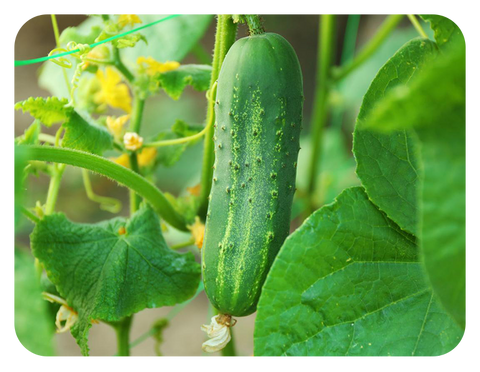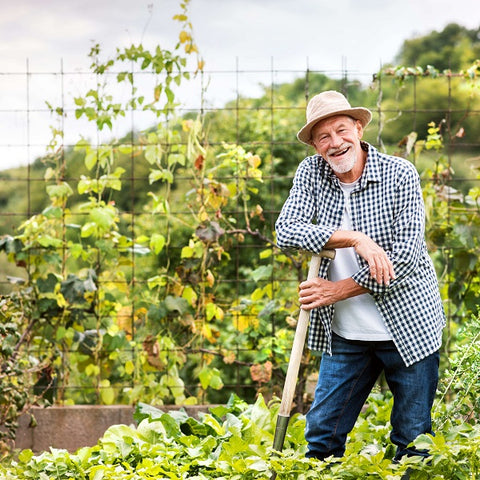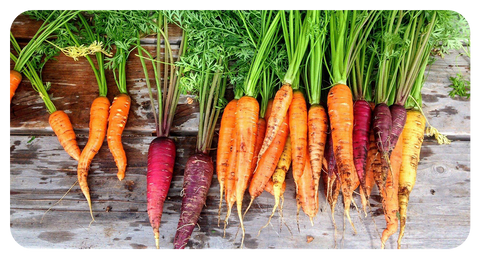At this time, most people are looking to grow something in their garden. But most of them find it hard to choose what to plant. This era pursues the ECO concept, they try to eat fresh food. So, vegetables are the best food in our life. The following content also has some reference value for raised garden beds.
What is vegetable growing?
Growing vegetables is the perfect way to improve the environment and save a few pennies.
Another benefit is that you can choose organic produce without having to rely on supermarkets and stores to get your vegetable intake.
But where to start? Home Improvement has put together a handy A-Z vegetable cheat sheet on the best ways to grow vegetables.
With the price of fruit and vegetables rising by 8% post-Brexit, the concept of growing your own is now better than ever. See the diagram to see how it works.
The 10 easiest vegetables to grow in your garden
1. Tomatoes
Tomatoes are good for smaller gardens or even balconies because they don't need much space to grow. Tomato plants take 12 weeks to harvest.
In addition to this relatively rapid growth period, the plant can produce up to six years' worth of fresh tomatoes a day. This means you can save £52 a year as consumers buy a box of tomatoes every week.

2. Carrots
Carrots are another vegetable that grows well in rain, even in a garden that gets less sun. The real trick to producing good carrots lies in the consistency of the soil you use.
Clean, well-drained soil is ideal for carrots, but it's even better if you can plant them high up. If having the perfect image of carrots isn't a problem, they'll grow just fine in any soil in your backyard.
3. Peas
Peas are a great choice if you are ready to start planting them in early spring. Make sure your garden soil is moist before you begin.
You can also sprinkle a layer of wood ash over the ground before planting to make sure the peas get everything out of the soil.
4. Lettuce
Unbeatable fresh salad from your yard! Fortunately, lettuce - this is a great variety of plants, including microgreens (young greens, chopped after a few weeks), head lettuce, leaf lettuce, spinach, etc.
Lettuce is an easy plant to grow and keep. Plant seeds every two weeks to space out the harvest. Look for butter crunches, salad bowls, or rocket (lettuce) seeds.
5. Bell peppers
Like tomatoes, bell peppers are usually available at nurseries and home improvement stores.
They make crunchy salads, add color to soups, and are a nutritional supplement to kebabs. Try California Wonder, Gypsy and Big Bertha.
6. Beans
I grow a lot of different beans, preferring fujimoto beans (those grown in tents or trellis) and bush beans (adapted to the edges of POTS or garden beds). I also grow dried beans for autumn and winter.
Beans multiply and toil. Once the beans are starting to form, choose the everyday ones, as they taste best when they are young and tender. The only exception is beans grown for drying, which are left to ripen and dry on the vine.
7. Basil
This aromatic herb is an essential addition to cooking, and not just an option for lovers of Italian food. You can grow basil in POTS or on the ground - or even indoors on a sunny windowsill. In early June, plant seeds directly into bright, well-drained areas of the garden.
When the leaves are the ideal size, remove them from the plant and wait for the basil to continue to provide aromatic and flavorful leaves that can also be dried and used long after summer.
8. Cucumbers
Cucumbers are another easy vegetable to grow and grow well in containers. As long as the weather is sunny and warm, your cucumbers should have no trouble growing taller.
Just make sure it's supported, because stems like to crawl. If you often forget to water your plants, leave cucumbers alone, as they need to be watered regularly. If remembering to water isn't a problem, your garden will soon be full of cucumbers!

9. Chilies
Peppers require more preparation and a longer growing season than the other vegetables on this list, but if you're willing to put in the time, it'll be worth it in the end.
Peppers take a long time to grow from seed, just like Onions. You can plant seedlings to give them enough time to grow before the soil gets too cold. Peppers require warm soil and little or no nitrogen fertilizer.
10. Onions
These last two vegetables require more effort, but more experienced gardeners trying them in your first vegetable garden will impress you. Make sure you have your garden mapped out before you start planting.
Onions grow best in well-drained, compostable soil. They also take longer to grow from seed than other vegetables; Many gardeners plant bulbs or potted plants to shorten planting time. The benefit of adding Onions to your garden is that you can use the green shoots a few weeks after planting.

5 Frequently Asked Questions about growing garden vegetables
1) What kind of soil is best for growing vegetables?
Many composts and organic matter, such as composted leaves and ground or dried aged bark, are the most suitable soil for growing vegetables.
Whatever you start with, add enough organic material so that the improved soil is neither sandy nor dense.
2) What is the best month for growing vegetables?
Cold season crops grow best in early spring or late summer and in the fall when the weather is cooler.
Warm-season crops grow best in late spring, summer and early fall when the weather is warm.
3) How often should I water my garden?
The general rule is to water your garden once a week, about 2 inches. Water more often, but shallower watering results in weaker root growth due to evaporation.
4) What do plants have to do with science?
Photosynthesis is the biochemical mechanism that binds plants together. Photosynthesis allows plants to capture energy from the sun to produce sugar molecules.
Within the chemical bonds of sugar molecules, plants can store energy. Plants also have cell walls made of cellulose.
5) How do I prepare my garden for planting?
Before planting, the soil needs to be prepared with mushroom compost or cow or chicken manure.
Gently dig the compost or fertilizer into the ground and rake it, making sure it is crumbly, flat, and smooth. It breaks down gradually, providing beneficial organic matter to the soil.

Conclusion
Planning is crucial to crop rotation. The farmer can see what is happening, plan his field, and see where each crop is planted and when it will be harvested, irrigated, and replanted. Proper rotation can be maintained through well-planned planning.
Planning and planting are skills that farmers work together. They help farmers get the full yield of their land. Using a variety of growing methods wisely can allow farmers to grow healthier crops over a longer harvest period.
As with crop rotation, adequate preparation and planting also help farmers maintain soil fertility and health, which is good for current and future income.









